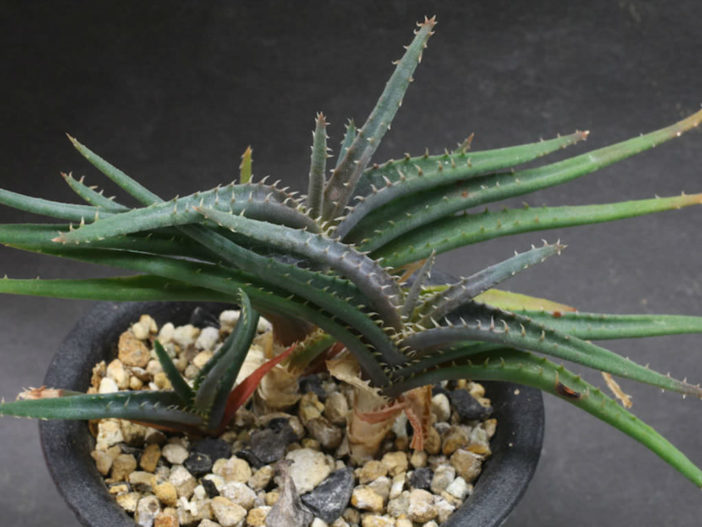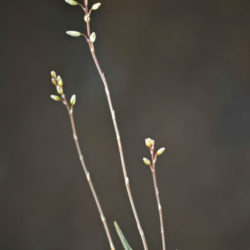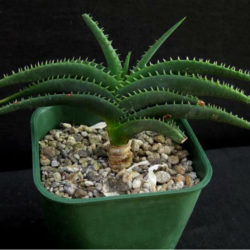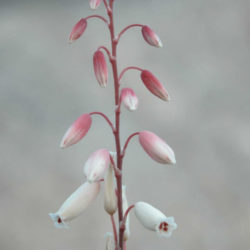Scientific Name
Aloe calcairophila Reynolds
Synonym(s)
Guillauminia calcairophila, Guillauminia calcairophylla
Scientific Classification
Family: Asphodelaceae
Subfamily: Asphodeloideae
Genus: Aloe
Description
Aloe calcairophila is a small, slow-growing succulent with fan-shaped (distichous) rosettes of fleshy, grayish-green leaves. It grows 4 inches (10 cm), branching near the base and forming a small clump. Leaves are gray-green to purplish with teeth along the margins that are folded inwards.
The urn-shaped flowers are white, though, with ample light, the buds may be red at first. They appear on a slender, unbranched, up to 12 inches (30 cm) tall stalk.
Origin
Aloe calcairophila is native to central Madagascar. It is restricted to a small area east of the Itremo Massif at elevations between 4,265 and 4,600 feet (1,300 and 1,400 m).

Hardiness
USDA hardiness zone 10b to 11b: from 35 °F (+1.7 °C) to 50 °F (+10 °C).
How to Grow and Care
Aloes are very forgiving plants. However, as with all succulents, Aloe must never be allowed to sit in stagnant water, and the plant should be carefully monitored to watch for signs of overwatering.
Aloes are not particularly fast-growing and will only rarely need repotting. Repot plants in the spring that are tipping over their pots or have ceased growing. Use a fast-draining potting mix with one-third of sand or pebbles. When repotting a larger plant, dividing the root ball carefully is possible. Some kinds of Aloe will send off off-sets that can be potted independently.
It needs an intense, bright light. They can withstand full summer sunlight once acclimated. In the winter, provide bright light. It prefers warmer temperatures of 70 to 80 °F (21 to 27 °C) but will survive down to 40 °F (4.5 °C). Feed with a cactus fertilizer in the summer only. Suspend feeding in the winter as the plant goes dormant.
See more at How to Grow and Care for Aloe.
Hybrids
Links
- Back to genus Aloe
- Succupedia: Browse succulents by Scientific Name, Common Name, Genus, Family, USDA Hardiness Zone, Origin, or cacti by Genus
Photo Gallery
Click on a photo to see a larger version.


